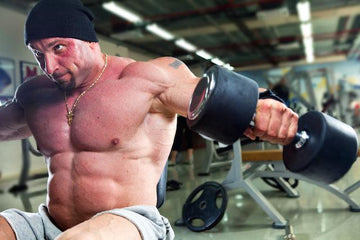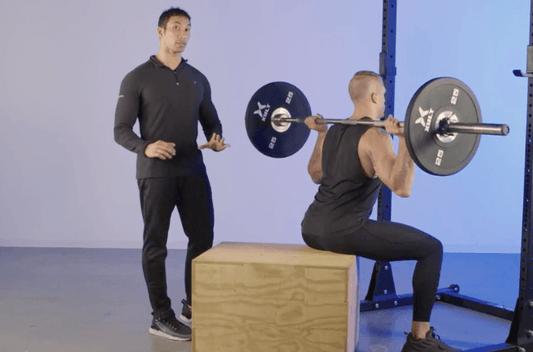

Bicep Isolation Exercises Require Longer Recovery
Table of Contents
| Bicep Isolation Exercises Require Longer Recovery |
by: Robbie Durand
Isolation exercises include the leg curl, biceps curl, quadriceps extension, wrist curl and front raise. Weight machines are often used to undertake these exercises. For years, most bodybuilders were told that since isolation exercises require less muscle activation than multi-joint exercises, it requires less recuperation time. If you were to compare a squat to the leg extension workout, one would expect that squats take longer to recover from but this is not what researchers found. Researchers compared the time course of bicep muscle recovery after multi- and single-joint exercises in highly resistance trained men.
Sixteen men performed, in a counterbalanced order, 8 sets of 10 repetition maximum unilateral seated row exercise, and 8 sets of 10 RM unilateral biceps preacher curl exercise using the contralateral arm.The seated row is a combined exercise, or multi-joint exercise: the elbow is not the only joint that moves; the shoulder joint and shoulder blades move too. The exercise stimulates not only the biceps but also muscles in the shoulder joint and – above all – muscles in the upper back.
Multi-Joint Unilateral Seated Row Exercise
Single Joint
Unilateral biceps preacher curl exercise
 Maximum isometric peak torque, and delayed-onset muscle soreness were recorded at baseline, 10 minutes, 24, 48, 72 and 96 hours after each exercise protocol. At the end of the study, there was a significant decrease in bicep peak torque 10 minutes after both the multi- and single-joint exercise sessions. However, peak torque decrease was greater after single-joint (26.8%) when compared to multi-joint (15.1%) exercise. In addition, bicep peak torque was lower (8.4%) than baseline 24 hours after the single-joint exercise, whereas bicep peak torque returned to baseline 24 hours after the multi-joint exercise. Compared to baseline, delayed-onset muscle soreness increased at 24, 48 and 72 hours post single-joint exercise. However, delayed-onset muscle soreness returned to baseline levels after 72 hours post multi-joint exercise. In addition, delayed-onset muscle soreness after single-joint exercise was greater than after multi-joint exercise at 24, 48 and 72 hours post exercise. The data suggest that after a resistance training session, highly resistance trained men experience dissimilar bicep strength recovery between single-joint and multi-joint exercises. Likewise, bicep peak torque delayed-onset muscle soreness is greater and takes longer to recover after single-joint exercise.
Maximum isometric peak torque, and delayed-onset muscle soreness were recorded at baseline, 10 minutes, 24, 48, 72 and 96 hours after each exercise protocol. At the end of the study, there was a significant decrease in bicep peak torque 10 minutes after both the multi- and single-joint exercise sessions. However, peak torque decrease was greater after single-joint (26.8%) when compared to multi-joint (15.1%) exercise. In addition, bicep peak torque was lower (8.4%) than baseline 24 hours after the single-joint exercise, whereas bicep peak torque returned to baseline 24 hours after the multi-joint exercise. Compared to baseline, delayed-onset muscle soreness increased at 24, 48 and 72 hours post single-joint exercise. However, delayed-onset muscle soreness returned to baseline levels after 72 hours post multi-joint exercise. In addition, delayed-onset muscle soreness after single-joint exercise was greater than after multi-joint exercise at 24, 48 and 72 hours post exercise. The data suggest that after a resistance training session, highly resistance trained men experience dissimilar bicep strength recovery between single-joint and multi-joint exercises. Likewise, bicep peak torque delayed-onset muscle soreness is greater and takes longer to recover after single-joint exercise.
Soares S, Ferreira-Junior JB, Pereira MC, Cleto VA, Castanheira RP, Cadore E, Brown LE, Gentil P, Bemben MG, Bottaro M. DISSOCIATED TIME COURSE OF MUSCLE DAMAGE RECOVERY BETWEEN SINGLE AND MULTI-JOINT EXERCISES IN HIGHLY RESISTANCE TRAINED MEN. J Strength Cond Res. 2015 Mar 23.
MUSCLE MEDIA MAGAZINE FOR MEN
The premier source of training, nutrition, supplements, fat loss and health for men.

















